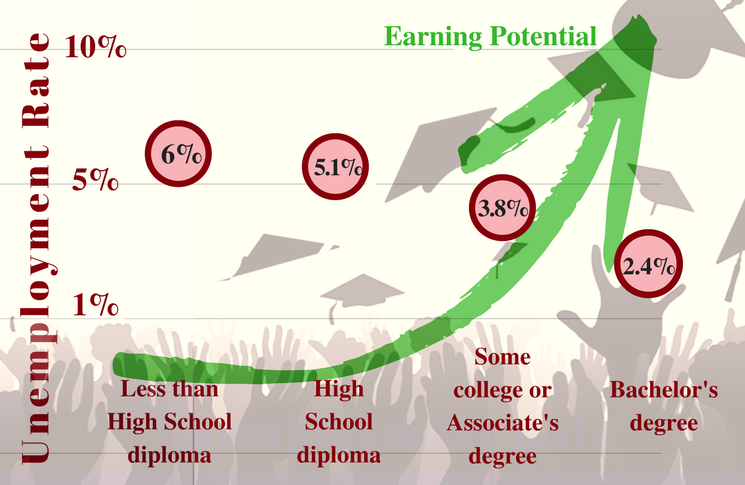The skills gap persists
by Gary Kaplan, JFYNetWorks Executive Director
Labor Day weekend kicked off, appropriately, with the national Employment Report. It was underwhelming. Job and wage growth held their sluggish pace. Commentaries ranged from “steady as she goes” to “more noise than signal” to “disappointing though hardly catastrophic.” A movie opening to reviews like those wouldn’t have lasted the weekend.
Though it didn’t make headlines, the breakdown by education was also steady as she goes. Each increment of education reduced the unemployment rate. The rate for people with less than a high school diploma was 6%; diploma but no college, 5.1%; some college or associate degree, 3.8%; bachelor’s or higher 2.4%. The snapshot: a bachelor’s degree cuts the high school diploma unemployment rate in half. These differentials have been inching wider for years. As we’ve noted previously, 99% of the jobs created since the Great Recession (2010-2016) have gone to college-trained workers. And even more startling: while total employment since 1989 grew by 35 million jobs, the number of jobs held by workers with a high school diploma or less actually declined 7.3 million.
It’s not news that education correlates directly to employment –and earnings. In Massachusetts, a bachelor’s degree has twice the earning power of a high school diploma. But progress toward higher levels of education has been too slow to keep up with employers’ needs. The Department of Higher Education has pegged the college graduate shortfall at 6000 per year. So even though, as reported by the Massachusetts Budget and Policy Center, we have the highest rate of post-secondary attainment in the country, Secretary of Labor and Workforce Development Rosalin Acosta cautions that…
“…we continue to see persistent gaps between the skill sets of available workers and the qualifications needed for in-demand jobs.”
Not everyone agrees that higher education is the universal solvent for all clogs in the workforce pipeline. If 70% of the jobs in Massachusetts require some form of post-secondary education, that still leaves 30% that don’t; and many college graduates are living in their parents’ basements. But the trend is inescapable: the non-college slice of the employment pie gets smaller with every new report. A degree alone may not guarantee employment, but in the real-world competition for jobs, it’s the ticket of admission to an interview.
It’s not just degrees that employers need—it’s skills. But the specific skills are both specialized and widely varied, and they change constantly. After the last decade or two of focus on technical and quantitative skills, even the tech sector is now realizing that it also needs “soft” skills like oral and written communication, human relations, cross-cultural competency, critical thinking, creative problem-solving and other staples of the long-disparaged liberal arts. There’s even a new coinage for this re-emerging domain: the “rapport sector.”
Labor Day coincides with the beginning of school. The conjunction may be a historical accident, but it is emblematic of the symbiosis of classroom and workplace we urgently need. Our high-tech/high skill economy has painted itself into a corner. The only way to staff American industry with a workforce capable of sustaining the relentless innovation and cutthroat competition of the global marketplace is to re-tool our workforce development pipeline. That pipeline is our K-16 education system. It’s our lifeline to the future.





